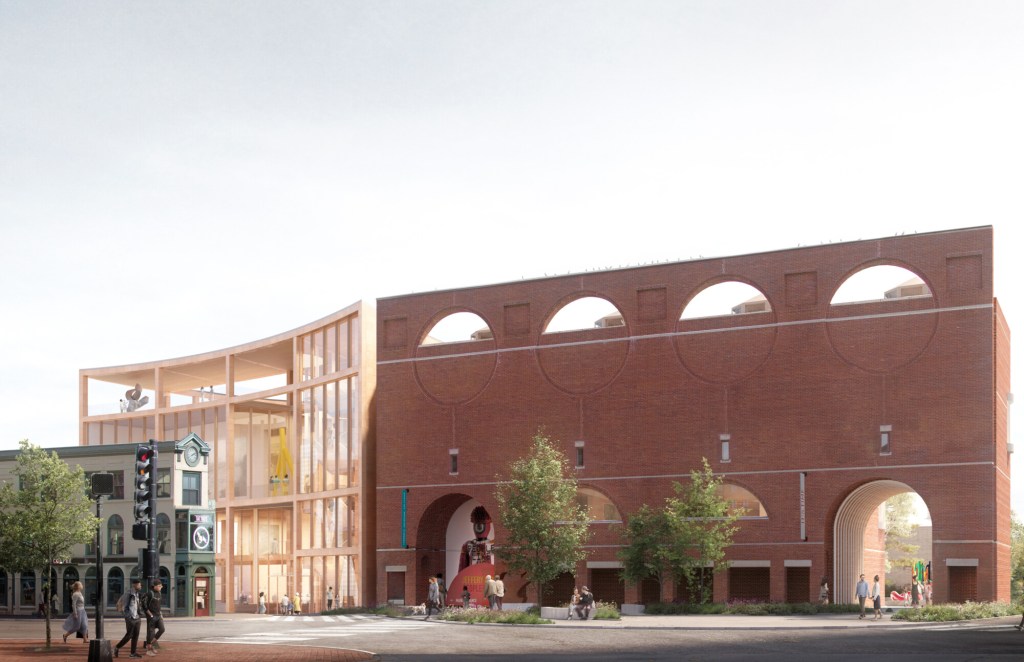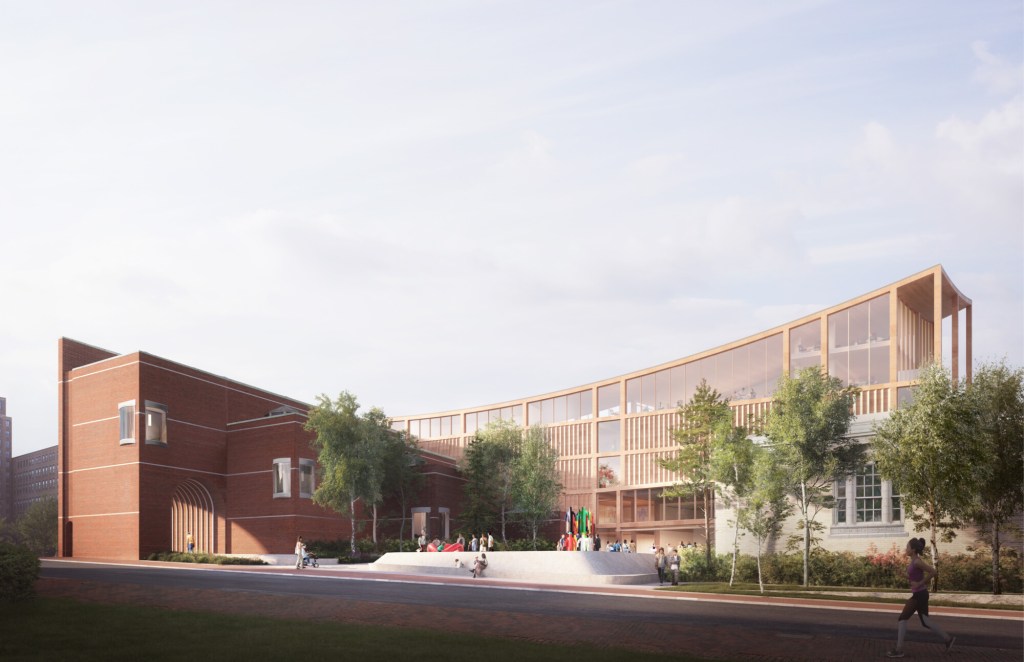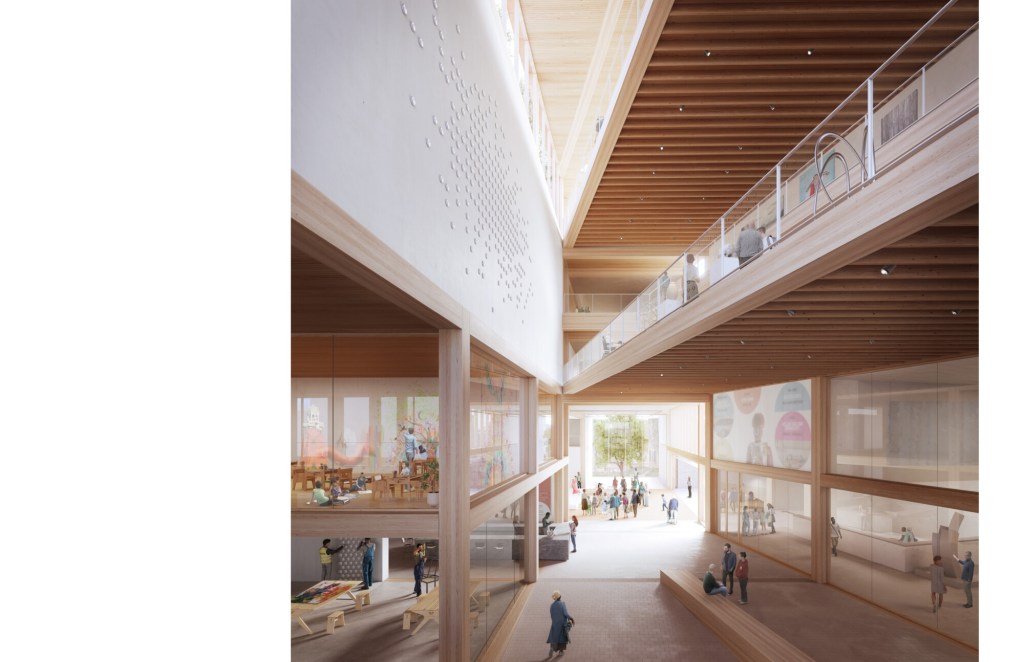An expansion of the Portland Museum of Art that will more than double its size and transform both Congress Square and the city’s skyline will be overseen by the West Coast firm Lever Architecture.
“This is one of the most significant moments in the PMA’s 140-year history,” museum Director Mark Bessire said in an announcement. “Lever, and the team they have assembled, have demonstrated that they care deeply about our region’s future, our unique arts culture, and the needs of our communities.”
Lever – based in Portland, Oregon, and Los Angeles – and three other finalists with expertise in museum design were announced in November.
“The whole process was great, and a lot of things felt serendipitous,” said Chandra Robinson, a principal at Lever. “The team felt connected and cohesive in coming up with our design, and that made the process more fun.”
Thomas Robinson, the firm’s co-founder, said he was impressed with the museum’s “authentic desire to really engage with the larger community,” something that doesn’t happen with every project.
The museum publicly launched a $100 million campaign in February to expand and unify its campus in downtown Portland, which no longer has adequate space for its growing collection of artwork and staff.
The existing campus already includes five buildings that occupy a half block between High and Spring streets almost directly in the middle of the Portland peninsula. The most recent building, the Charles Shipman Payson Building, was built in 1983 and holds much of the museum’s exhibition space.
The other buildings date back as far as 1801, although each has been renovated over the years.
The expansion was only possible after the museum’s 2019 deal to buy 142 Free St. from the Children’s Museum and Theatre of Maine, which moved to Thompson’s Point. That building will be torn down and replaced by the new building designed by Lever.

A rendering of The Portland Museum of Art renovation and expansion by Lever Architecture. Image by Lever Architecture, Courtesy of Portland Museum of Art and Dovetail Design Strategists
The concept design presented by the architecture firm shows a curved front, dominated by windows, that would match the height of the Payson Building facing Congress Square. The glass-heavy design would continue on all sides and the building’s height would increase toward the rear, connecting the Payson Building to the others: the Sweat Memorial Galleries, the McLellan House and the Clapp House.
TIMBER AND TERRA-COTTA
In its proposal, Lever said the curved roofline was designed to frame the sun as it rises and sets and to honor Maine’s Wabanaki communities. The building will be made from timber, a nod to Maine’s forest products history, and terra-cotta.
Thomas Robinson said having to design a building that could fit seamlessly into the existing buildings was challenging but more interesting than starting from a blank page.
“It’s not just an addition, it’s a transformation, because it has to connect to what is there,” he said. “It’s a marriage of old and new; of city and landscape.”
Kyo Bannai, a museum board member, led the jury of cultural and business leaders that selected Lever and said it took hours for them to pick the winner. In the end, Lever stood out for its preparation – and its willingness to be flexible.
“They displayed confidence in their approach while simultaneously showing the ability to listen and the enthusiasm to learn from others,” Bannai said. “As carefully thought-out as their proposal was, they also recognize that this is the beginning of the journey as they start working with our community this spring in earnest.”
Bannai said the more than 2,000 public comments submitted about the four finalists were overwhelmingly positive, and many agreed with jury members that Lever’s design stood out.
“The Lever concept honors the actuality of our city,” one comment states. “Its street facade at Free Street meets the Payson building. … It starts with the PMA home and then lifts it up and outward, toward the port, the harbor, the sea.”
Although the concept design was lauded, elements may, and likely will, change. Lever Architecture and museum officials will get to work on a final design after additional discussion and community engagement. The project is not expected to be completed until 2026.
Before any construction, the project would need to be reviewed by at least Portland’s planning and historic preservation boards, city spokesperson Jessica Grondin said. If it requires a change to the land use code, the museum would have to apply for an amendment that would need the approval of the planning board and the City Council.
When the museum announced its intent to expand a little less than one year ago, staff envisioned a six- or seven-story building that would create 60,000 square feet of new space.
Some of the elements the museum wants to see included are a ground floor with free art galleries, classrooms and community space; room for an auditorium, traveling exhibitions, offices, an all-ages “makers space” and a photography center; and a rooftop sculpture garden and café.
A VISION OF ART FOR ALL
Above all, museum leaders want the newly constituted museum to be a true gathering place, for all, dismantling the idea that art museums are only for the affluent.
Chandra Robinson said the ground floor, which is meant to be free and accessible to all, and the rooftop area, are likely to stand out as the design is refined.
“Understanding their mission of art for all, that’s something we thought about along the way,” she said. “How can we put on display some programming that their building just doesn’t support, or discover new opportunities in spaces they haven’t had before?”
Lever was selected among more than 100 teams from all over the world that submitted proposals last summer. Teams were instructed by the museum’s consulting firm, Dovetail Design Strategists of New York, to assemble diverse and specialized teams.
Among those who consulted with Lever was Chris Newell, a Passamaquoddy and former director of the Abbe Museum in Bar Harbor.
The museum first began thinking about expansion in 2014, when a local architect was commissioned to survey the buildings and grounds and design a campus master plan.
The expansion project also coincides with an ongoing overhaul of Congress Square, one of the city’s busiest areas, that includes a redesign of the intersection and of the park that sits directly across from the museum. That could be completed sometime next year.
Send questions/comments to the editors.









Comments are no longer available on this story